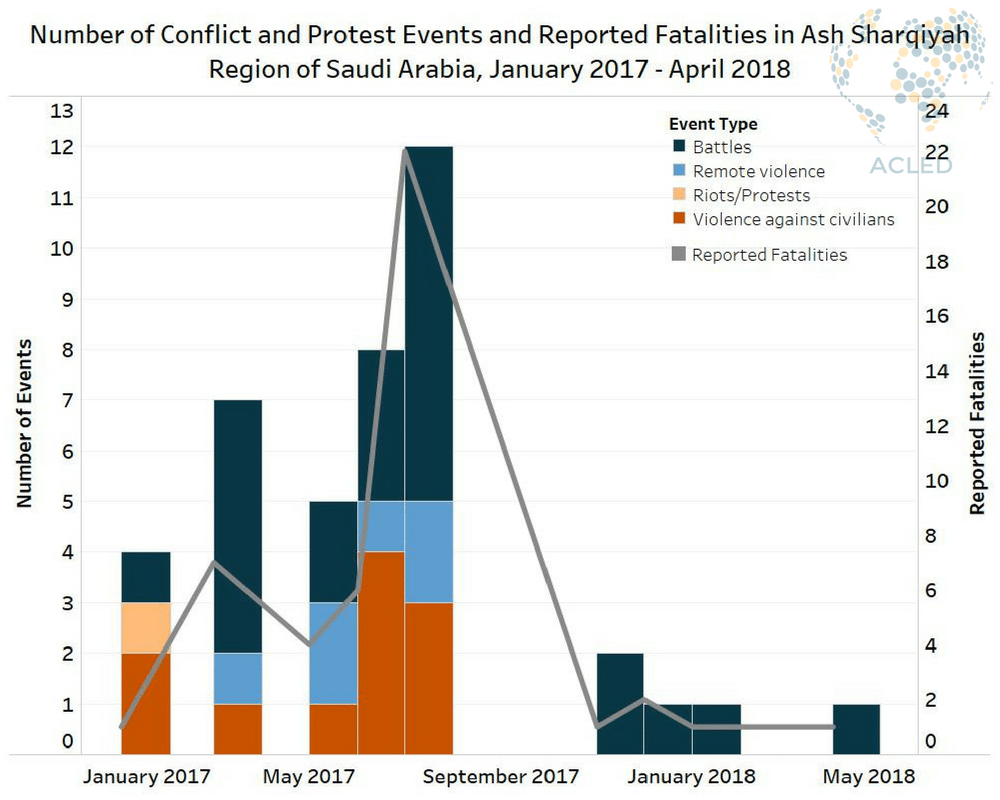In early April, the killing of a police officer during a raid in the town of Awamiyyah attracted renewed attention on a simmering conflict in Saudi Arabia’s Eastern Province (The National, 8 April 2018). Despite a marked decrease in overall levels of political violence since last summer, the episode points to the long-standing tensions behind the recent unrest across the region. ACLED recorded five conflict-related fatalities between August 2017 and April 2018, compared to 40 in the first seven months of 2017 (see figure below). July 2017 was the most violent month since January 2017 as heavy shelling on Awamiyyah resulted in an estimated 18 deaths, including civilians, and the destruction of entire residential areas (The Independent, 4 August 2017).
Along with neighbouring Bahrain, this oil-producing province is home to a restive Shiite minority living predominantly around the town of Qatif. Since 2011, the local Shiite population has held frequent demonstrations protesting systematic discrimination and demanding the release of political prisoners, while armed insurgents have sporadically targeted security forces (ACLED, 23 April 2018). The Saudi government reacted with large-scale arrests and violent repression, which culminated in January 2016 with the mass execution of 47 dissidents on charges of terrorism (Human Rights Watch, 4 January 2016). Among them was Shiite cleric Nimr al-Nimr, a popular opposition figure from Awamiyyah, whose death sparked outrage among the Shiite community and a new wave of attacks against government forces.
Since then, militants have conducted several attacks against security forces and government figures critical of the protest movement. A recent episode involved pro-government judge Mohammed al-Jirani, who was abducted in December 2016 near Qatif and was found dead twelve months later during a security raid that resulted in the death of a police officer and a gunman (Gulf News, 25 December 2017). Despite government claims that regard them as “Iranian-sponsored terrorists”, the identity of these militant groups still remain obscure since access to Qatif area continues to be restricted for journalists and other organisations.
AnalysisCivilians At RiskConflict MonitoringFocus On MilitiasMiddle EastPro-Government MilitiasRemote ViolenceRioting And ProtestsUnidentified Armed GroupsVigilante MilitiasViolence Against Civilians







